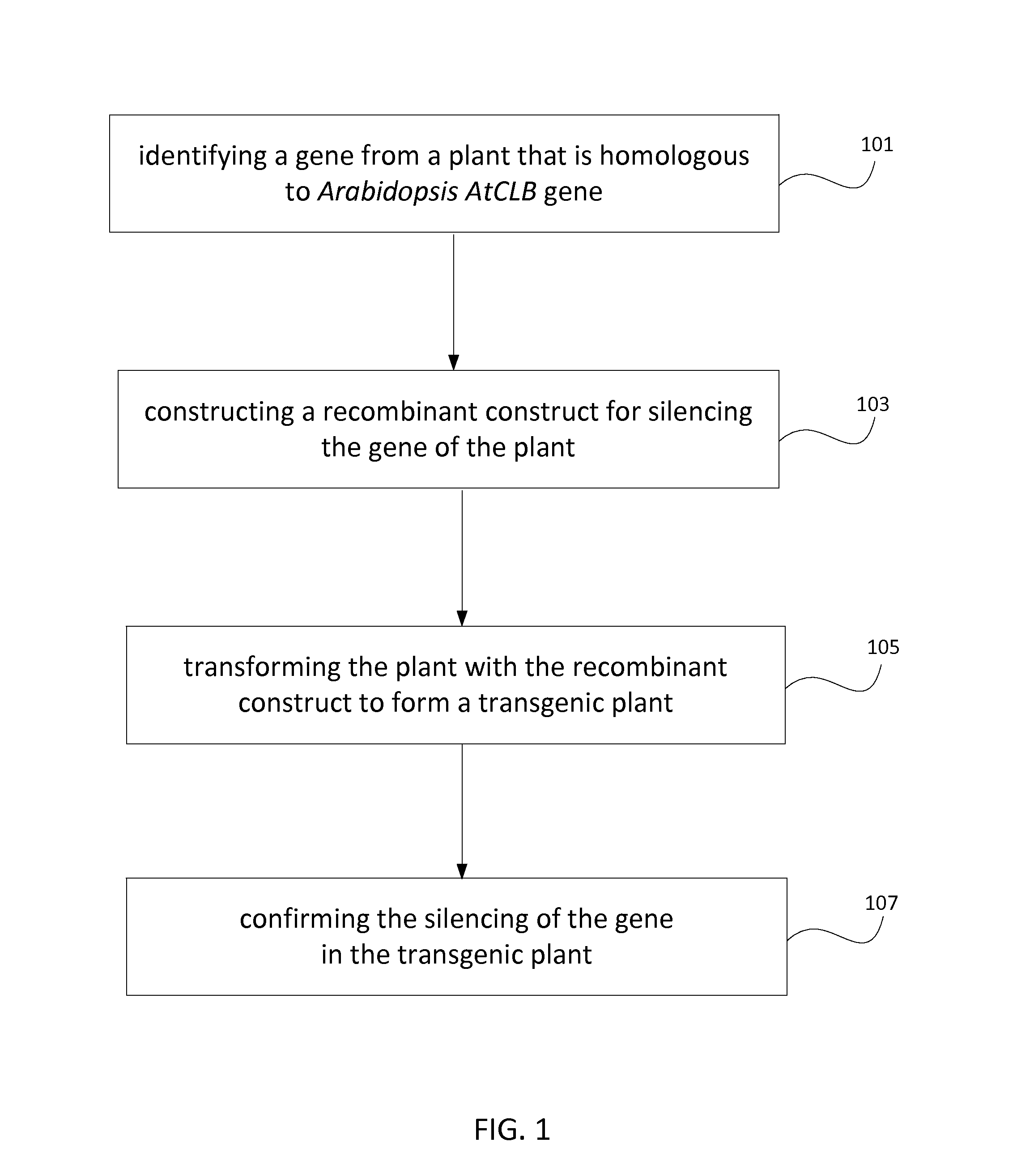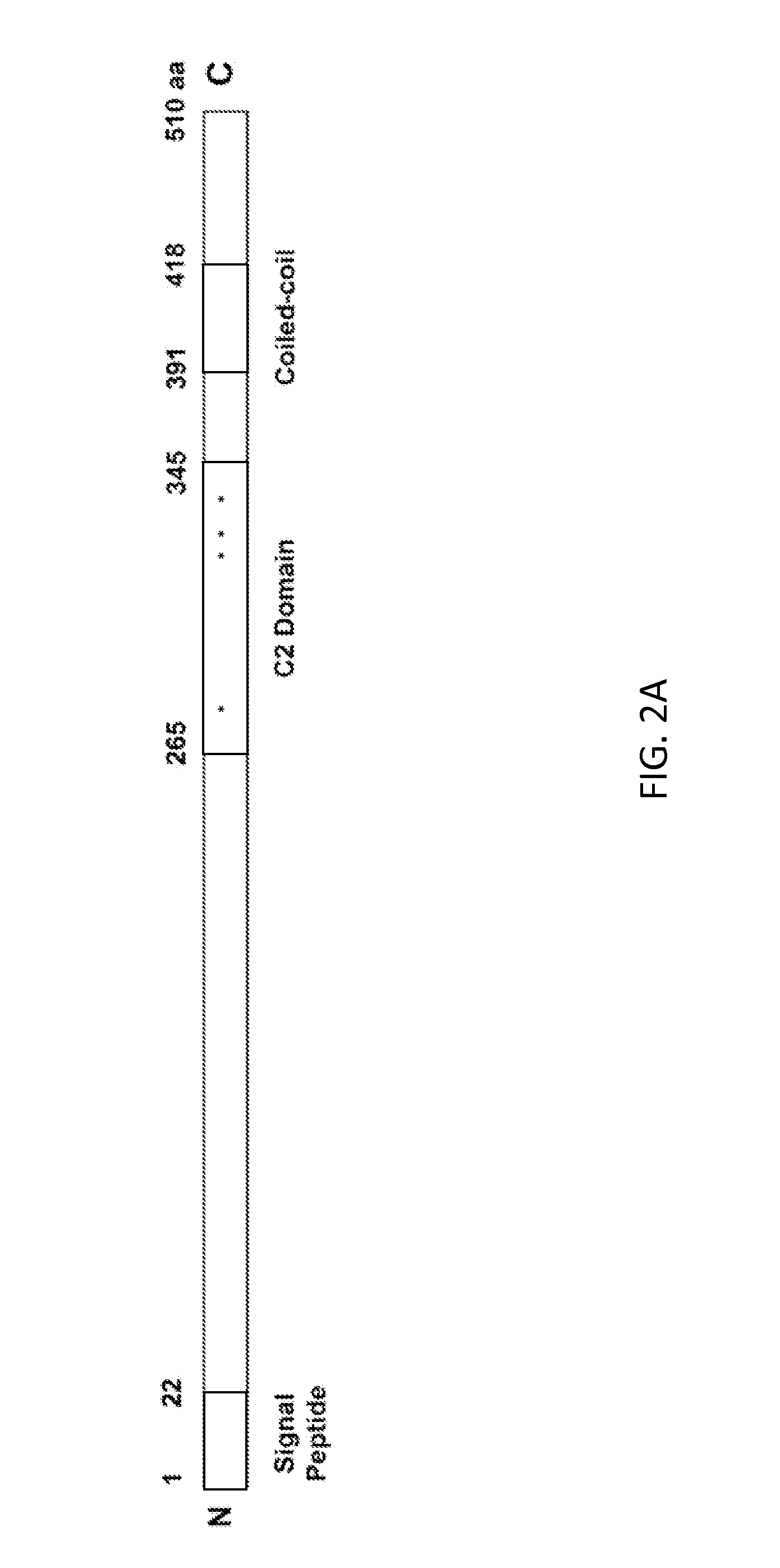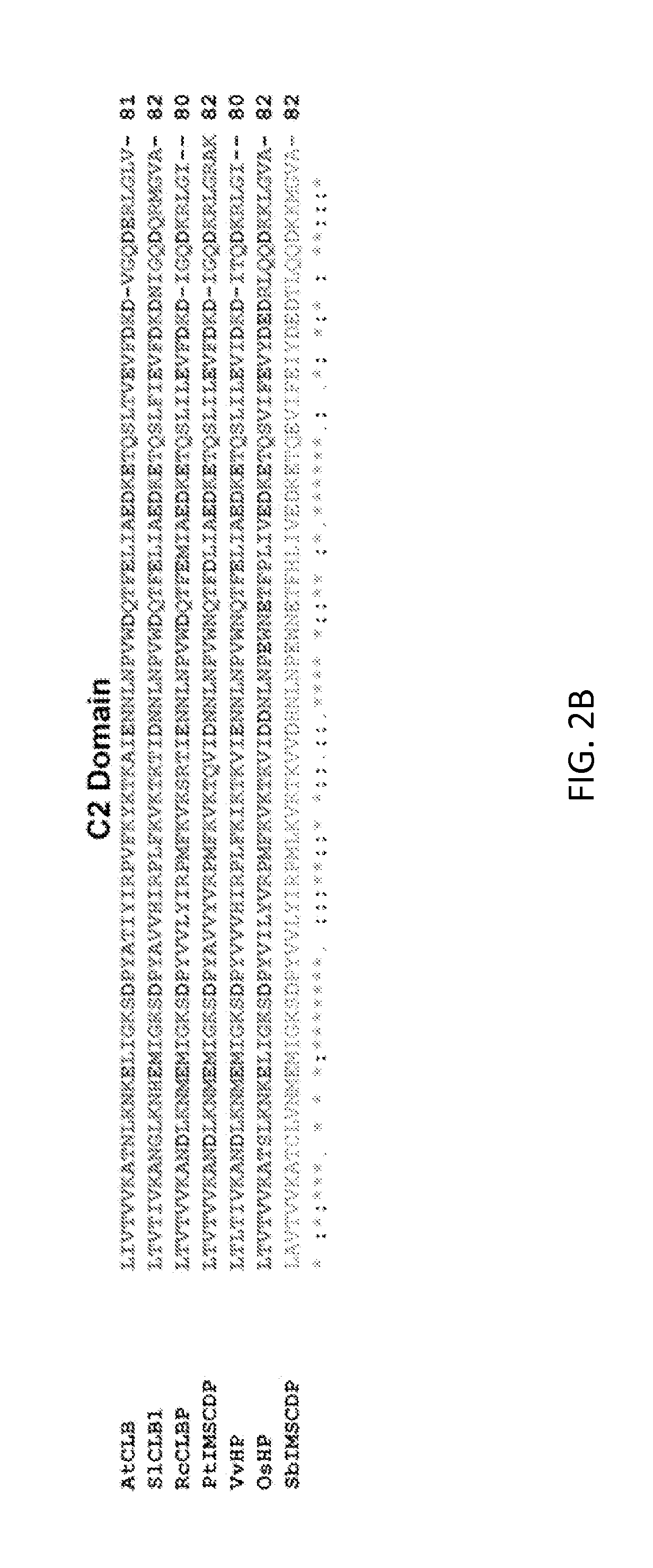Method for producing stress tolerant transgenic plant by silencing a gene encoding calcium-dependent lipid-binding protein with c2 domain and applications of the same
a technology of calcium-dependent lipid-binding protein and transgenic plant, which is applied in the field of transgenic plant production by silencing a gene encoding calcium-dependent lipid-binding protein with c2 domain and a plant, can solve the problems of reducing plant growth and yield, productivity and quality, and preventing crop plants from realizing their full genetic potential
- Summary
- Abstract
- Description
- Claims
- Application Information
AI Technical Summary
Benefits of technology
Problems solved by technology
Method used
Image
Examples
example 1
Tolerance to Water of Arabidopsis thaliana with Mutated Atclb Gene
[0083]An Arabidopsis thaliana Ca2+-dependent lipid-binding protein (AtCLB) containing C2 domain is able to negatively regulate stress response in Arabidopsis thaliana. Expression of the Atclb gene was documented in all analyzed tissues of Arabidopsis thaliana (leaf, root, stem, flower, and silique) by real-time PCR analysis. Immunofluorescence analysis revealed that AtCLB protein is localized in the nucleus of cells in Arabidopsis thaliana root tips. It is demonstrated that the AtCLB protein is capable of binding to the membrane lipid ceramide. The role of the Atclb gene in negatively regulating responses to abiotic stress in Arabidopsis thaliana was identified. FIGS. 3A-3E illustrate drought-tolerance phenotype of T-DNA insertion knockout lines Atclb1-1 and Atclb1-2 produced according to one embodiment of the present invention.
[0084]Two T-DNA insertion knockout mutant lines Atclb1-1 and Atclb1-2 were constructed. The...
example 2
Tolerance to Salt of Arabidopsis thaliana with Mutated Atclb Gene
[0088]Referring to FIGS. 4A-4C, tolerance of mutant lines Atclb1-1 and Atclb1-2 to salt are evaluated. 1-week-old seedlings of wild type, 35S-Atclb overexpression line, Atclb1-1, and Atclb1-2 mutant lines were grown on media containing different concentrations of NaCl. The Atclb knockout lines exhibited increased tolerance to salt stress, while 35S-Atclb overexpression lines were hypersensitive to NaCl. Referring to FIG. 4A, seeds of the Atclb1-1 knockout line were able to germinate on 150 mM NaCl-containing medium. Further, referring to FIG. 4B, sterilized seeds of wild type and knockout lines were germinated on regular MS medium, then 6-day-old seedlings were transferred to Petri plates containing 150 mM NaCl. The seedlings of loss-of-function Atclb1-1 mutant line were able to survive in the presence of 150 mM NaCl for 2 months.
[0089]Referring to FIG. 4C, in a separate experiment, one-week-old Arabidopsis thaliana se...
example 3
Constructing a Transgenic Rice Plant Tolerant to Abiotic Stress by Silencing OsHP Gene
[0091]Atclb gene is playing role of negative regulator of abiotic stress response. In certain embodiments, the silencing of active homologues of Atclb gene will lead to increase of tolerance to abiotic stress. The plant or crop of choice includes, but not limited to, Solanum lycopersicum, Ricinus communis, Populus trichocarpa, Vitis vinifera, Oryza sativa, and Sorghum bicolor.
[0092]FIG. 5 illustrates a method for producing a rice plant tolerant to stress conditions by silencing a gene that contains C2 domain that is homologue to C2 domain of Atclb gene, according to one embodiment of the present invention. Vectors for post transcriptional gene silencing (RNA interference (RNAi)) or virus-induced gene silencing (VIGS) can be used for silencing of AtCLB crop homologues.
[0093]In the embodiment, Rice cultivar Nipponbare or other rice cultivar is used as the starting material for constructing a transge...
PUM
| Property | Measurement | Unit |
|---|---|---|
| Fraction | aaaaa | aaaaa |
| Fraction | aaaaa | aaaaa |
| Stress optical coefficient | aaaaa | aaaaa |
Abstract
Description
Claims
Application Information
 Login to View More
Login to View More - R&D
- Intellectual Property
- Life Sciences
- Materials
- Tech Scout
- Unparalleled Data Quality
- Higher Quality Content
- 60% Fewer Hallucinations
Browse by: Latest US Patents, China's latest patents, Technical Efficacy Thesaurus, Application Domain, Technology Topic, Popular Technical Reports.
© 2025 PatSnap. All rights reserved.Legal|Privacy policy|Modern Slavery Act Transparency Statement|Sitemap|About US| Contact US: help@patsnap.com



